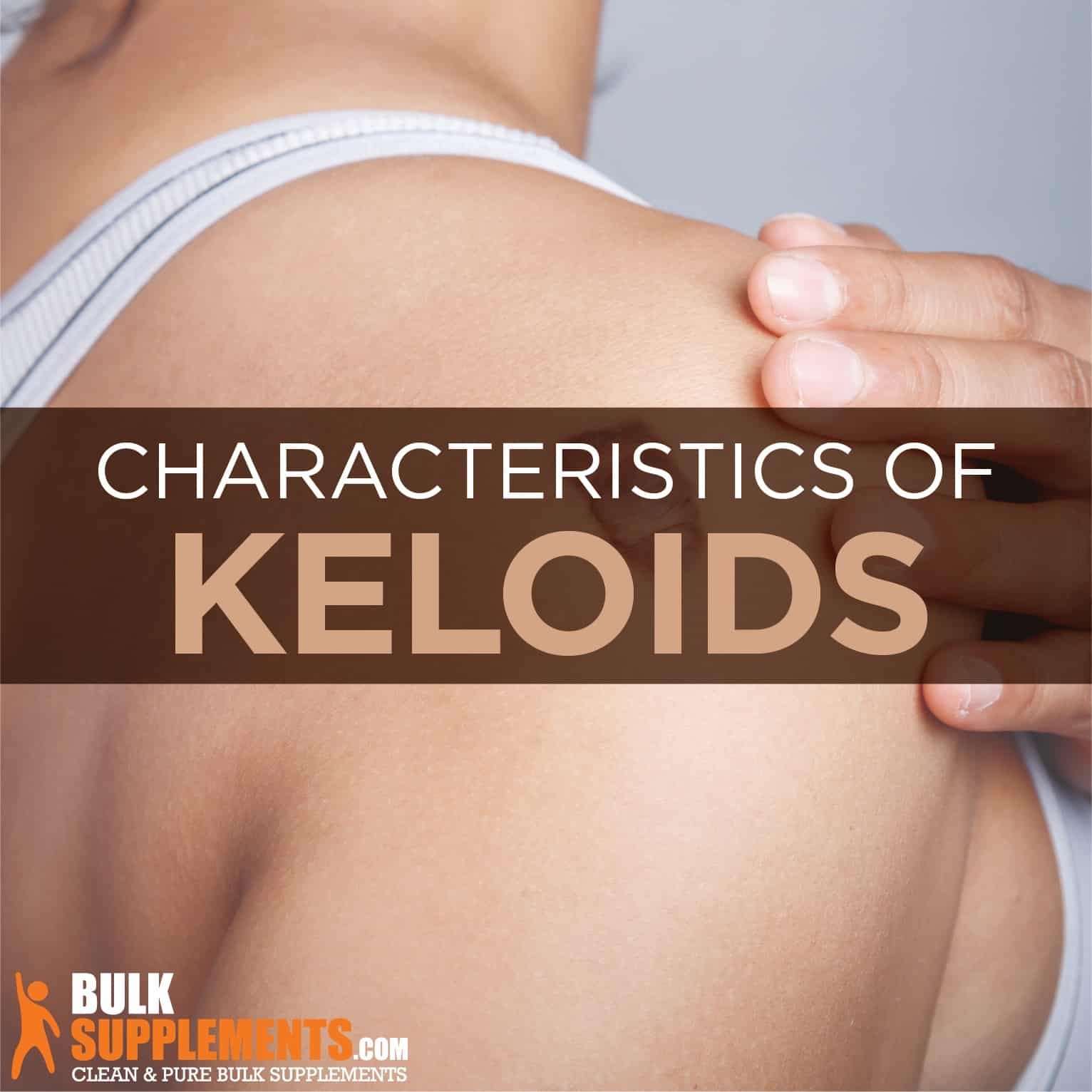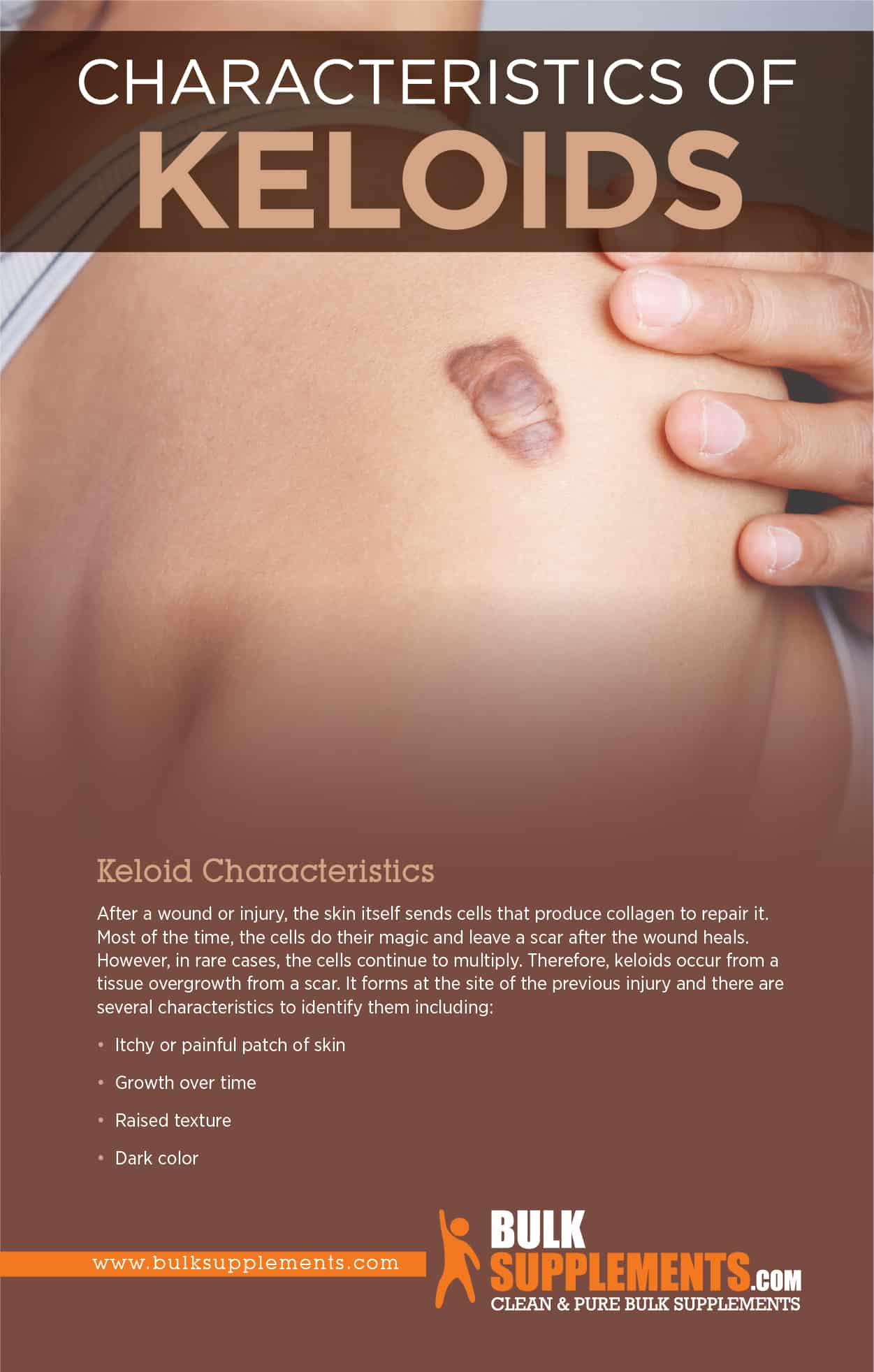Keloids: Characteristics, Risk Factors & Treatment
by James Denlinger Digital Marketing Strategist
What are Keloids?
Have you ever experienced having a scar after an injury, burn, cut or severe acne that feels itchy or painful to touch? Most likely, this is not a typical scar that forms after a wound. It may be a keloid. Keloids are augmented scars that form from tissue overgrowth. They occur on the skin where a wound has healed. Keloids are different from normal raised scars because they can even grow even larger than the original wound. They can appear anywhere on the body, but most of the time they grow on the chest, earlobes, upper back and shoulders.
Keloids are not harmful. However, without treatment, they may cause detrimental effects to a patient’s health, especially if they grow prominently. They may end up covering a vast area of a specific body part like the joints, which may reduce the patient’s ability to move that particular part of the body. Keloids are a type of benign tumor and they typically do not turn to cancer. Although they are not malignant, patients may consider them cosmetic nuisances.
Research estimates that there are about 11 million Americans with keloids. In most cases, keloids usually affect patients with darker skin tones. Studies suggest that this correlation may be because of an anomaly in the production of melanocyte-stimulating hormone that the skin produces.
Keloids vs. Hypertrophic Scars
There is a similar type of scar called a hypertrophic scar, but there are differences between the two. Unlike keloids, hypertrophic scars do not grow beyond the boundary of the original trauma and they may fade as time passes. On the other hand, keloids can grow beyond the initial size of the wound or incision and they grow slowly over time. Hypertrophic scars are also easier to treat than keloids.
Keloid Characteristics
After a wound or injury, the skin itself sends cells that produce collagen to repair it. Most of the time, the cells do their magic and leave a scar after the wound heals. However, in rare cases, the cells continue to multiply. Therefore, keloids occur from a tissue overgrowth from a scar. It forms at the site of the previous injury and there are several characteristics to identify them including:
- Itchy or painful patch of skin
- Growth over time
- Raised texture
- Dark color

Risk Factors for Developing Keloids
Researchers do not know exactly what causes keloids. However, many different skin injuries may develop into keloids and some people may be more likely to develop keloids than others. Patients may develop keloids from puncture wounds, tattoos, piercings, cuts or severe acne. Insect bites, injections or surgical scars are also examples of trauma that may lead to keloids. Specifically, these types of wounds prolong healing, which increases the risk for a keloid to develop.
Not everyone who suffers from an injury or a wound will develop a keloid. However, researchers note that there are certain risk factors that increase the risk. For example, patients with darker skin may be more likely. Age may also play a role, especially in patients going through puberty or older than 30.
Keloid Treatment
Keloids grow cells that are a different color from the patient’s natural skin tone. They may not be particularly dangerous, but they can be an issue cosmetically. Luckily, there are different treatment options to improve their appearance, including medical treatments and home remedies.
Medical Treatment
Medical treatment options include tretinoin cream, cryotherapy, steroid injections and imiquimod cream. There are also surgical procedures to remove the growth completely or partially. Tretinoin is typically a prescription medicine for acne and aging, but it may help reduce keloids by stimulating skin cell turnover. During cryotherapy, a surgeon temporarily freezes the tissues to reduce the size of the growth. Steroid injections may be successful at treating newer keloids, combined with surgery or cryotherapy. Imiquimod cream is designed to treat different skin lesions, including skin cancer. It may help after a surgical procedure that removes the keloid and it may reduce the chances of recurrence.
Home Remedies
Apple Cider Vinegar & Honey
Apple cider vinegar may be helpful to minimize keloids because it contains acetic acid that kills bacteria. It may also help reduce pain and itching, reducing the keloid and flattening the surface. Honey has anti-inflammatory properties that can help relieve discomfort from cuts and infections. It may also act as a potential healing tool for keloids. Honey may help moisturize the skin and prevent discoloration after the keloid is gone. It may take time to notice improvements with these treatments.
Silicone Treatments
Topical silicone may be an effective treatment for hypertrophic and keloid scars. Two of the most common forms of silicone treatment are gels or adhesive sheets. Although there are many studies that note benefits of both forms for old and new scars, there are still people who ask which is preferable.
Silicone adhesive sheets are rectangle shaped and they are flexible and incredibly soft. One side of the sheet has an adhesive for smooth, tight attachment to the skin. According to research, the adhesive reproduces the skin’s blockage properties to treat keloids and other types of scars.
Silicone topical gel may also work wonders on the skin. When it dries it allows the uppermost layer of the skin to absorb more water. The advantage of using gels over sheets is that patients can apply them to visible areas like the shoulders, elbows, neck, hands and even the face. Gels also do not come off when the body moves like a sheet might.
Supplements for Keloids & Skin Health
Patients may also find supplements beneficial to treat keloids. Several different supplements may help improve skin conditions. They are not a cure for any medical condition on their own, but they may help in combination with other treatment options. Consult a doctor before adding supplements to a health regimen.
Turmeric
Turmeric is an antioxidant substance with anti-inflammatory properties and its main ingredient is curcumin. It may also help reduce inflammation in different parts of the body and help patients recover after surgery, which may reduce the risk of developing keloids. As a dietary supplement, the recommended dosage for turmeric root extract powder is one 1,000 mg dose per day.
Aloe Vera
Aloe vera may help get rid of keloids because its leaves contain multiple components that can treat spots and scars. It is also a great moisturizer for the skin it may heal scars from burns, surgery or other injuries. The recommended dosage for aloe vera extract powder is 1,000 mg a day with at least 8 oz. of water.
Green Tea
Green tea is packed with antioxidants that can fight free radical damage in the body and protect it from disease. Because of its antioxidant contents, it may be an effective tool for several different inflammatory conditions, such as Crohn’s disease. Green tea also has the potential to improve skin conditions including acne, rosacea or warts and it may also help patients with keloids. The recommended dosage for green tea extract is 500 mg up to two times a day. Do not use this supplement for longer than three months. Consult a doctor before adding it to a dietary regimen.
Bottom Line
Keloid scars develop after an injury to the skin, such as a burn, piercing or surgical incision. However, they are not the same as normal raised scars because they can expand beyond the size of the injury and grow bigger with time. They can grow up to 12 inches above the skin and they are often darker in color than the patient’s natural skin tone. They may also itch and cause pain to the touch. Keloids are not serious and medical experts consider them benign tumors. They usually do not turn cancerous. But even though they do not cause any harm to the body, they may be a problem cosmetically.
Luckily, there are different treatment options for keloids, including creams, injections and surgical procedures. There are also home remedies for keloids that may be helpful by helping to reduce the size and pigmentation of the scar. Patients may also benefit from natural supplements that have skin healing abilities, such as green tea, aloe vera or turmeric. However, these supplements will not treat keloids on their own. But in combination with other treatment methods, they may improve overall health. Always consult a doctor before taking any supplements.
Sponsor Ads
Created on Mar 1st 2020 15:41. Viewed 181 times.




